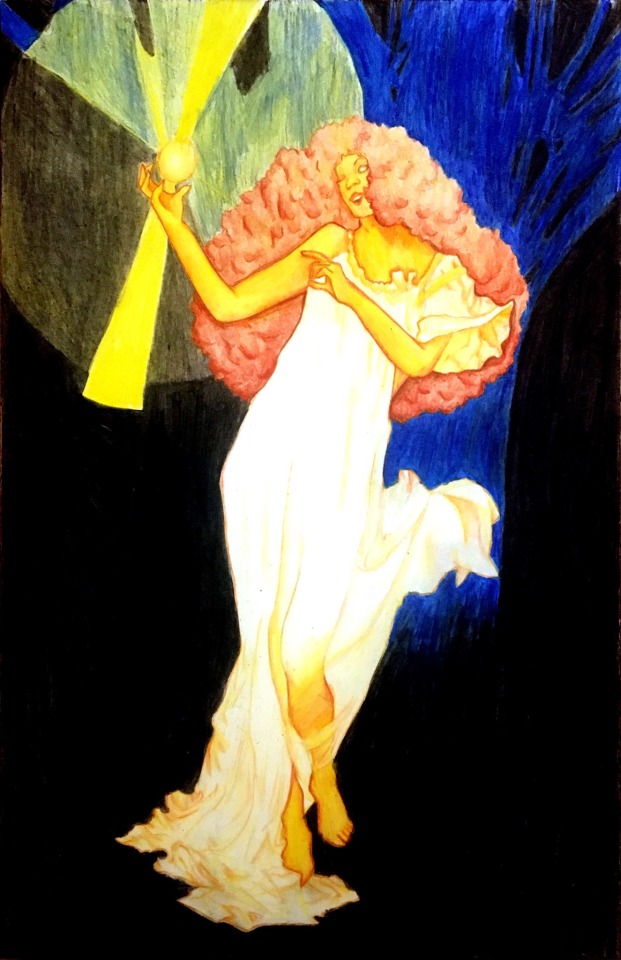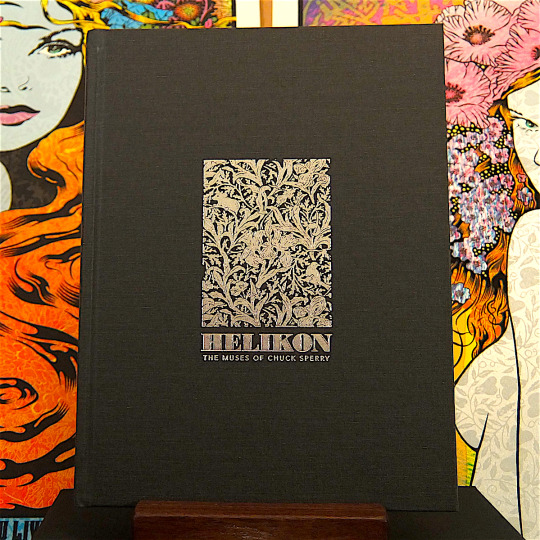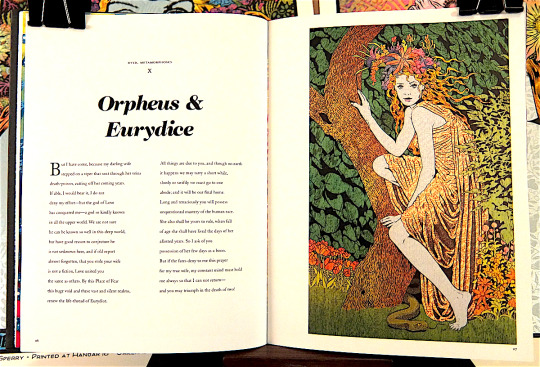#pose from alphonse mucha’s spring :)
Text
Alphonse Mucha (1860-1939) was a Czech artist who was a part of the Art Nouveau movement. He moved to Paris in 1893, which is where he began to create his famous advertisements, most often featuring women. I admire his style, the thick, black lines make it differ from other art at the time. This is no doubt due to the fairly recent discovery of Japanese woodblock prints. His poses are also extremely dynamic, as seen in works such as The Seasons from 1896. Especially the woman representing spring, as she is both leaning back and slightly twisting. The woman representing summer is also facing away from and towards us simultaneously. I hope to reference his talent in my own.
References:
Interview with the artist's grandson:

The Seasons, 1896
0 notes
Text

dawn of a new day!
[Image Description: a traditional colored pencil illustration. a figure with warm colored glowing skin is dressed in a long, simple dress, somd fabric piled on the ground. They are smiling and winking, and the eye that is open has a cloud-shaped iris. They have warm brown natural hair which goes down to their waist and puffs out to eithrr side. They hold one hand aloft, which has a small glowing ball floating above it. a circle of light and two more highly saturated yellow rays come from the ball, lighting up the background, which consists of a bare, dark blue tree trunk that fades into the black background. End ID]
26 notes
·
View notes
Photo

LOSH APPRECIATION WEEK DAY 2 - Eurythmic
Eurythmic made me think of Saturn Girl, given she uses her powers for relaxing others. I imagine they would feel kinda like low frequency.
Based her pose off of Alphonse Mucha’s Spring (1896), background is from NASA that I edited.
85 notes
·
View notes
Photo

[id: a chart titled “2019 in art -- birdmarrow” and featuring panels of different illustrations. the first row shows january (asami sato extending a hand alight with lightning from her glove), february (a pink-skinned tiefling smiling and sticking her forked tongue out), march (oikawa tooru seated in a throne with a smile), and april (a pair of fischer’s lovebirds sitting together). the second row shows may (jon sims carrying an injured daisy tonner along), june (edward elric and ling yao leaning in close together), july (aziraphale and crowley sitting together on a bench), and august (helen and melanie king playing poker). the third row shows september (zero suit samus kicking up into the air), october (pre-timeskip edelgard with short hair), november (post-timeskip ferdinand styled like alphonse mucha’s “spring”), and december (a messy sketch of post-timeskip ferdinand, in the summer costume, smiling with his hand over his chest). /end id.]
going to take a wild leap and assume i won’t do any big pieces in the next 3 days, so here’s my art summary for 2019! i tried to experiment more with lighting, poses, and (vaguely) setting this year, and that’s most of what i’m planning on doing in 2020 as well 8-) i’m also hoping to play around with comics and animatics, maybe!
#art summary#birbdoods#captioned#the last piece is a ferdinand sketch i only posted on twitter#it was either that or some VERY messy traditional sketches. i have not drawn much the past couple of months
2 notes
·
View notes
Photo










Helikon hath no fury like a muse scorned
Helikon, The Muses of Chuck Sperry
by Chuck Sperry, Foreward by Charles Bock
Hangar 18
2017, 136 pages, 9.0 x 12.0 inches, Hardcover
$65 Buy on Amazon
It’s a familiar sight at Widespread Panic, Black Keys, Umphrey’s McGee, Pearl Jam, and Dave Matthews concerts — a crush of people, mostly guys, some with poster tubes slung over their shoulders, crowding around the merch booth even before taking their seats, hoping to score the latest limited-edition screen print of a fetching, scantily clad babe by artist Chuck Sperry. A few years back, Sperry’s “ladies,” as these pieces are known among some rock-poster collectors, were likely mistaken for multi-colored updates of the hippie chicks that occasionally populated the 1960s psychedelic Fillmore and Avalon posters of Wes Wilson, Stanley Mouse, and the late Alton Kelley. Those artists often took their inspiration from Art Nouveau-era legends like Alphonse Mucha and Jules Cheret, and Sperry’s ladies certainly mine that territory, too. But according to a gorgeous and meditative self-published monograph titled Helikon, Sperry’s muses go back much further than the late 19th century, by a factor of a few thousand years.
Posing in little more than their flowing hair, amid flowers, stars, and damask backgrounds whose patterns also adorn their silver flesh, Sperry’s muses take their names from the Orphic Hymns, which were composed as long ago as the third century B.C. In Helikon, which takes its name from the mountain in Greece where the impact of Pegasus’s hooves are said to have created the springs that gave birth to the three original muses, Sperry pairs photographs of his beauties, printed on oak or birch panels, with their corresponding Orphic Hymns, song lyrics by English rocker Nick Cave, and poems by Ovid, Homer, and Hesiod, along with a few more contemporary sources. The resulting mood is as far removed as it could be from the bedlam at the merch booth. Instead, we are invited to linger and read — God help us — the ancient poetry that has inspired Sperry’s work.
Reading this book about images, it turns out, is important, though not unconditionally. For example, in his foreword to Helikon, Charles Bock begins with this probably accurate prediction: “Odds are, you won’t read this.” In the scheme of things, skipping Bock’s intro won’t be the end of the world, whereas not reading the poems and prose accompanying Sperry’s muses would be a major mistake. Poems take time to read, and longer to digest. Some must be read more than once, and none can be read while multitasking. In Helikon, the words transport us, allowing us to see Sperry’s work through fresh, yet ancient, eyes. Importantly, they drive from our minds thoughts of the transitory — that Tethys was first introduced to the world as a Dave Matthews poster; that Artemis and Naiad made their debuts before fans of the Black Keys; that Olympia, Daphne, Semele, and Thalia were Panic ladies before they were Sperry’s muses. “Impatient of yoke, the name of bride, She shuns, and hates the joys, she never try’d,” Ovid tells us of Daphne. Somehow, “Widespread Panic, Tedeschi Trucks Band, Jerry Joseph. Friday, June 20, 2014, Chicago, Illinois. FirstMerit Bank Pavilion at Northerly Island” doesn’t have quite the same ring to it.
– Ben Marks
February 8, 2017
11 notes
·
View notes